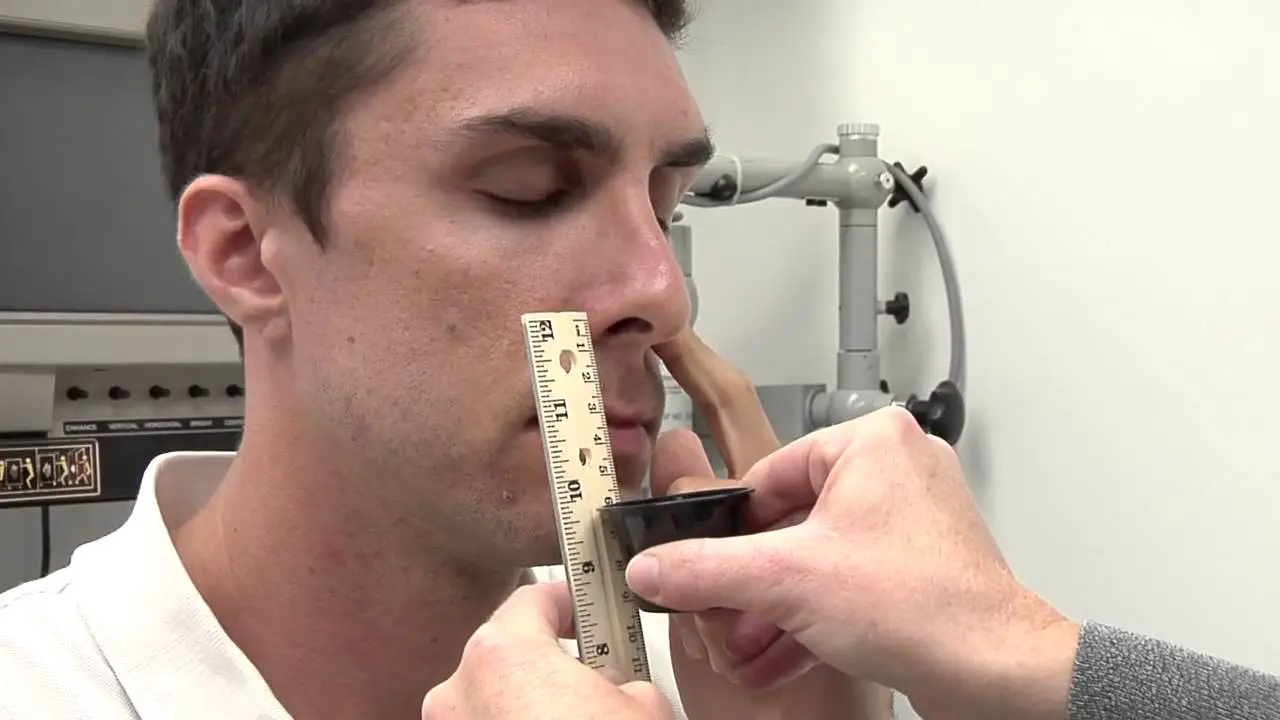A quick peanut butter smell test has been found to potentially detect Alzheimer’s disease, providing a simple and non-invasive method for early diagnosis. This test involves measuring a person’s ability to detect the odor of peanut butter, with differences in smell sensitivity potentially indicating the presence of Alzheimer’s disease.
Researchers hope that this test could be an inexpensive and accessible tool for detecting Alzheimer’s disease in its early stages and tracking its progression over time. By utilizing the distinct smell of peanut butter, this test offers a promising avenue for improving early diagnosis and intervention for individuals at risk of developing Alzheimer’s disease.

Credit: health.clevelandclinic.org
The Peanut Butter Smell Test
Alzheimer’s disease is a devastating condition that affects millions of people worldwide. Early detection is crucial for effective management and treatment. Researchers have been working tirelessly to develop reliable and non-invasive methods of diagnosing Alzheimer’s, and one promising approach is the Peanut Butter Smell Test.
How Does The Peanut Butter Smell Test Work?
The Peanut Butter Smell Test is a simple and affordable screening tool that can potentially detect early-stage Alzheimer’s disease. This test is based on the observation that individuals with Alzheimer’s disease often experience a reduction in their sense of smell. The test involves measuring the distance at which a person can detect the odor of peanut butter through each nostril separately.
During the test, the person being assessed should close one nostril and place a small amount of peanut butter near the open nostril using a ruler as a reference point. The tester then gradually moves the peanut butter closer to the person’s nose until they can detect the distinct smell. The distance at which the peanut butter scent is detected is recorded for each nostril.
Research And Findings
Several studies have investigated the effectiveness of the Peanut Butter Smell Test in detecting Alzheimer’s disease. The University of Florida conducted research demonstrating that individuals with early-stage Alzheimer’s had a significantly higher difference in smell detection between their left and right nostrils compared to individuals without the disease.
These findings suggest that the Peanut Butter Smell Test has the potential to be a useful tool in identifying early-stage Alzheimer’s disease. However, further research is needed to validate its accuracy and reliability across diverse populations.
Effectiveness And Limitations
The Peanut Butter Smell Test offers several advantages as a potential screening tool for Alzheimer’s disease. Firstly, it is a quick and simple test that can be easily administered in various settings, such as clinics or even at home. It also does not require complex equipment or expensive resources, making it an affordable option.
However, it’s important to note that while the Peanut Butter Smell Test shows promise, it is not a definitive diagnostic tool for Alzheimer’s disease. Its effectiveness lies in its ability to indicate potential cognitive impairment, which would then require further clinical evaluation for a formal diagnosis.
Additionally, it’s essential to consider the limitations of the test. Factors such as age, overall health, and individual variations in smell sensitivity can affect the results. Moreover, the Peanut Butter Smell Test should not be used as a standalone screening tool, but rather as part of a comprehensive assessment that includes other diagnostic measures.
| Pros | Cons |
|---|---|
| Quick and simple test | Not a definitive diagnostic tool |
| Affordable and accessible | Results can be influenced by various factors |
In conclusion, the Peanut Butter Smell Test shows potential as a non-invasive and cost-effective screening tool for detecting early-stage Alzheimer’s disease. While further research is needed to validate its accuracy, this simple test offers a promising avenue for early detection and intervention.

Credit: premiereresearchinstitute.com
Implications And Future Research
The discovery that a simple smell test using peanut butter can potentially detect Alzheimer’s disease has significant implications for future research and the field of neurodegenerative diseases. This breakthrough test opens up new possibilities for early detection and treatment of Alzheimer’s, as well as providing a non-invasive and cost-effective diagnostic tool.
Possible Applications Of The Peanut Butter Smell Test
The peanut butter smell test has the potential to be used in various applications related to Alzheimer’s disease. Here are some possible areas where this test could be applied:
- Diagnostic tool: The peanut butter smell test can serve as a diagnostic tool for Alzheimer’s, helping healthcare professionals quickly and accurately identify individuals at risk or in the early stages of the disease.
- Monitoring disease progression: This test can also be utilized to track the progression of Alzheimer’s disease in patients, aiding in the assessment of treatment effectiveness and disease management.
- Research studies: Researchers can incorporate the peanut butter smell test into their studies to investigate the relationship between olfactory dysfunction and Alzheimer’s, further advancing our understanding of the disease.
- Population screening: The ease of administering the smell test makes it a potential candidate for population-wide screening programs, identifying individuals who may require further evaluation for Alzheimer’s disease.
Challenges And Areas For Further Investigation
While the peanut butter smell test shows promise, there are still challenges and areas that require further investigation. Some key aspects to consider include:
- Standardization: Developing standardized protocols and guidelines for administering the test will be crucial to ensure consistent and reliable results across different healthcare settings.
- Sensitivity and specificity: Further research is needed to determine the sensitivity and specificity of the peanut butter smell test in detecting Alzheimer’s disease, particularly in different populations and disease stages.
- Validation and comparison: Additional studies are necessary to validate the findings of the initial research and compare the peanut butter smell test with existing diagnostic methods to assess its accuracy and reliability.
- Long-term efficacy: Longitudinal studies are required to evaluate the long-term efficacy and predictive value of the peanut butter smell test in identifying individuals at risk of developing Alzheimer’s disease.
Potential Impact On Early Detection And Treatment
The potential impact of the peanut butter smell test on early detection and treatment of Alzheimer’s disease is immense. By enabling early identification of individuals at risk or in the early stages of the disease, this test can facilitate timely interventions and treatments. Early detection can also help individuals and their families plan for the future and access appropriate support services.
The use of the peanut butter smell test for monitoring disease progression can provide valuable insights into the effectiveness of different treatment approaches, allowing for personalized and targeted interventions. Furthermore, the non-invasive nature of this test makes it more accessible and less burdensome for patients, potentially increasing compliance and participation in research studies and clinical trials.
In conclusion, the discovery of the peanut butter smell test as a potential diagnostic tool for Alzheimer’s holds significant promise for the field of neurodegenerative diseases. Continued research and validation of this test have the potential to revolutionize early detection, monitoring, and treatment methods, ultimately leading to better outcomes for individuals affected by Alzheimer’s disease.

Credit: www.washingtonpost.com
Frequently Asked Questions On This Quick Peanut Butter Smell Test Can Detect Alzheimer’s
What Is The Smell Test For Alzheimer’s?
A quick peanut butter smell test can detect Alzheimer’s disease. This test measures the ability to detect the odor of peanut butter and is a sensitive marker for Alzheimer’s. It is an inexpensive and noninvasive way to diagnose early-stage Alzheimer’s and track its progression.
What Is The 5 Minute Test For Alzheimer’s?
The 5-minute test for Alzheimer’s involves using a dollop of peanut butter and a ruler to confirm early stage Alzheimer’s disease. This noninvasive and inexpensive test measures the ability to smell peanut butter, which can be a sensitive marker for Alzheimer’s.
[47 words]
Is There A Quick Test For Alzheimer’s?
The Self-Administered Gerocognitive Exam (SAGE) is a quick test used to detect mild cognitive impairment and early dementia. It is a brief self-administered cognitive screening instrument.
What Are The 10 Smells That Diagnose Alzheimer’s?
The peanut butter smell test can help diagnose Alzheimer’s. It measures the ability to detect the odor of peanut butter, which is a sensitive marker for the disease.
Conclusion
Detecting Alzheimer’s disease early is crucial for effective treatment and management. This quick peanut butter smell test has shown promising results in identifying potential cases of Alzheimer’s. By measuring an individual’s ability to detect the odor of peanut butter, healthcare professionals may be able to diagnose the disease at its early stages.
This non-invasive and cost-effective test could revolutionize Alzheimer’s research and provide hope for individuals and their families. Further studies and validation are needed, but this test holds great potential in the fight against Alzheimer’s.

